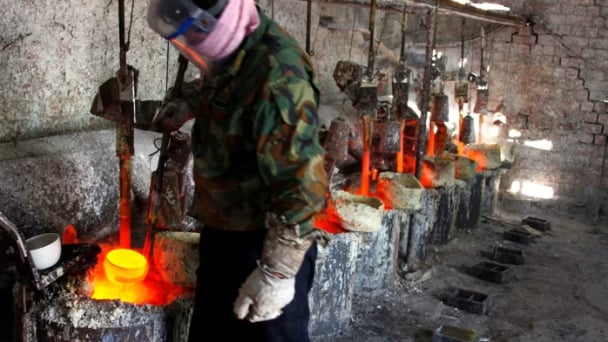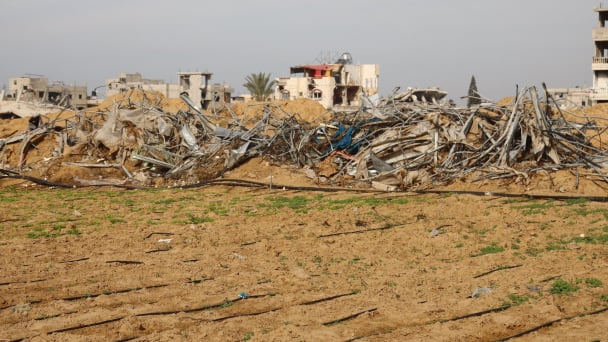June 16, 2025 | 19:08 GMT +7
June 16, 2025 | 19:08 GMT +7
Hotline: 0913.378.918
June 16, 2025 | 19:08 GMT +7
Hotline: 0913.378.918

Around 2.5 million more people have been pushed into acute food insecurity, as UN agencies grapple with increasing needs.
The Food and Agriculture Organization of the United Nations (FAO) and the United Nations World Food Programme (WFP) today announced that new data from the latest Integrated Food Security Phase Classification (IPC) analysis reveals the highest number ever recorded of acutely food insecure populations in the Democratic Republic of the Congo (DRC).
An alarming 28 million people in DRC are now facing acute hunger (IPC Phase 3 and above) – a number that has grown by 2.5 million since the most recent outbreak of violence in December; included in this group are 3.9 million people who are experiencing emergency levels of hunger (IPC Phase 4).
Over the past six months, a worsening food crisis has been gripping the people of DRC, where conflict, economic instability and surging food prices have put millions at risk.
Internally displaced people escaping violence remain among the most vulnerable, bearing the brunt of the worsening food crisis. According to the latest analysis, more than two million displaced people are experiencing acute hunger, with an alarming 738,000 in emergency conditions (IPC Phase 4).
"The humanitarian situation in the DRC is deteriorating at an alarming rate. Families who were already struggling to feed themselves are now facing an even harsher reality,” said Eric Perdison, WFP’s Regional Director for Southern Africa and ad interim WFP DRC Country Director. “We have resumed operations in parts of North and South Kivu, and we are committed to do more to support those at risk, but we urgently need more resources.”
A deadly combination of conflict, economic turmoil and high prices
The situation is particularly dire in the conflict-affected eastern provinces of DRC, where families have lost access to their livestock and livelihoods. More than ten million people are facing acute food insecurity (IPC Phase 3 and above), including 2.3 million in emergency conditions (IPC Phase 4) in the eastern part of the country.
In North Kivu, South Kivu, and Ituri, violence has uprooted tens of thousands of people, cutting them off from food supplies and humanitarian assistance. Armed clashes continue to disrupt food production, and trade routes, while humanitarian access remains limited, as security risks hinder the ability to deliver essential assistance.
The sharp depreciation of the Congolese franc, shuttered banks, and lost incomes have made it increasingly difficult for families to afford even the staples. At the same time, inflation and disrupted supply chains have contributed to a rise in food prices. Basic foods such as maize flour, palm oil, and cassava flour are seeing price increases of up to 37 percent compared to pre-crisis levels (December 2024).
WFP and FAO ramping up to meet needs of vulnerable populations
WFP and FAO are working together to provide life-saving food and nutrition assistance while strengthening the resilience of vulnerable communities.
To-date this year, 464,000 people have received WFP food, cash for food, and nutrition treatment in accessible areas of eastern DRC; WFP has managed to reach 237,000 people in Bunia alone.
Beyond emergency food assistance in eastern DRC, FAO and WFP have invested in resilience activities in North and South Kivu provinces to build skills and capacity amongst communities to improve their long-term food security.
“The current situation is dire for the population, as harvests are lost, food prices soar, millions of people face acute food insecurity and are increasingly vulnerable,” said Athman Mravili, FAO Representative ad interim. “FAO needs more resources to provide emergency assistance to support sustainable livelihoods for displaced populations. We are aiming to assist 1.6 million people in North and South Kivu, Ituri, and Tanganyika provinces with emergency food production support.”
In 2025, FAO requires US$ 200 million to reach 3.6 million people across the country with life-saving food production assistance. FAO’s emergency response will prioritize agriculture as a cornerstone of humanitarian aid, helping vulnerable households address acute food insecurity and malnutrition. By restoring agricultural livelihoods, FAO aims to empower communities to meet their own needs and lay the foundations for resilience.
In 2025, WFP plans to reach 6.4 million people in DRC with food and nutrition assistance while also investing in long-term solutions. US$ 399 million is urgently needed to sustain operations and meet growing humanitarian needs over the next six months.
WFP and FAO call on the international community to step up funding and humanitarian access to prevent a full-scale catastrophe. Without urgent support, hunger levels will continue to rise, pushing the most vulnerable into further destitution.
(FAO)

(VAN) Extensive licensing requirements raise concerns about intellectual property theft.

(VAN) As of Friday, a salmonella outbreak linked to a California egg producer had sickened at least 79 people. Of the infected people, 21 hospitalizations were reported, U.S. health officials said.

(VAN) With the war ongoing, many Ukrainian farmers and rural farming families face limited access to their land due to mines and lack the financial resources to purchase needed agricultural inputs.

(VAN) Vikas Rambal has quietly built a $5 billion business empire in manufacturing, property and solar, and catapulted onto the Rich List.

(VAN) Available cropland now at less than five percent, according to latest geospatial assessment from FAO and UNOSAT.

(VAN) Alt Carbon has raised $12 million in a seed round as it plans to scale its carbon dioxide removal work in the South Asian nation.

(VAN) Attempts to bring down the price of the Japanese staple have had little effect amid a cost-of-living crisis.